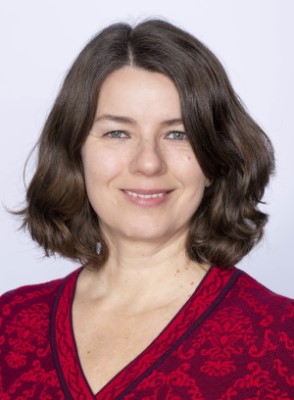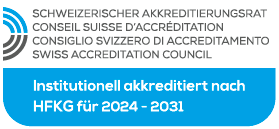
|
|
|
|
|
{{node.getProperty('name')}}
{{node.getProperty('organisation')}}
{{node.getProperty('street')}} {{node.getProperty('street2')}} {{node.getProperty('zip')}} {{node.getProperty('city')}} {{node.getProperty('email')}} Details |
{{node.getProperty('organisation')}} {{node.getProperty('street')}} {{node.getProperty('street2')}} {{node.getProperty('zip')}} {{node.getProperty('city')}} {{node.getProperty('email')}} |
Details |
|---|
| {{g.getLabel()}} | |
|---|---|
|
{{node.getProperty('title')}}
|
|
| mehr anzeigen von |
| Beschreibung | Nummer | Beginn | Buchbar | Typ | |||||||||||
|---|---|---|---|---|---|---|---|---|---|---|---|---|---|---|---|
|
|
|||||||||||||||
|
|||||||||||||||
| Beschreibung | Nummer | Buchbar | Typ | |||||||
|---|---|---|---|---|---|---|---|---|---|---|
|
||||||||||
| Beschreibung | Nummer | Buchbar | Typ | |||||||||
|---|---|---|---|---|---|---|---|---|---|---|---|---|
|
||||||||||||
| Projektname | Schwerpunkte |
|---|---|
|
{{node.getProperty('title')}}
Schwerpunkte
|
|
|
|
|
|
Language Learning and Teaching in Digital Transformation
The University of Teacher Education Lucerne, Switzerland, invites proposals for a two-day international conference on «Language Learning and Teaching in Digital Transformation» on 1–2 September 2023. The conference will respond to digitalization in education, and specifically in language learning and teaching, by integrating transdisciplinary perspectives on language education.
Plenary Speakers
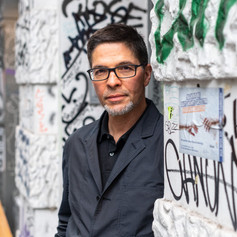
Jannis Androutsopoulos
Professor of German and Media Linguistics at the University of Hamburg, Germany
(© Jörg Müller)
De- and recentering language teaching and learning in digital environments: German on YouTube
Research on informal (non-institutional, non-guided) practices of language learning and teaching in digital environments shows that digital media resources boost opportunities for informal language learning, increase learner autonomy, and diversify the representations of language-learning targets (Chik 2019, Chik & Ho 2017, Würffel 2018). In this keynote, I propose the notions of ‹decentering/recentering› as a figurative caption of the tensions and ambiguities surrounding (especially second/foreign) language education with online resources. I first outline an overview of receptive, productive, and interactive language practices with language technologies, digital content platforms, and social networking sites, offering examples for how different combinations among these dimensions constitute patterns of language learning and teaching (Androutsopoulos 2016, 2018). I then examine one particular digital environment, YouTube, as a site of digital literacy and discursive practices around German as a foreign language (Chowchong 2022). Several YouTube channels provide a wide range of resources for learning German, their video lessons covering a wealth of linguistic phenomena in creative, imaginative, and entertaining ways. At the same time, the respective comment sections take up, complement, and even challenge the knowledge provided by the channel presenters, for example offering alternative understandings on the relation between standard and nonstandard German. Overall, while the sheer diversity of metalinguistic representations in these videos decenter target-language norms, the interaction between videos and comments brings to the fore some shared language ideologies, thereby recentering language-learning targets.
- Androutsopoulos, J. 2016 Digitale Medien: Ressourcen und Räume für interkulturelle Praktiken. Networx (74), https://doi.org/10.15488/2965
- Androutsopoulos, J. 2018 Digitale Medien und Interkulturalität. In: I. Gogolin et al. (eds.) Handbuch interkulturelle Pädagogik, 428-434. Bad Heilbrunn: Klinkhardt/UTB.
- Chik, A. 2019 Learner Autonomy and Digital Practices. In: A. Chik et al. (eds.) Autonomy in Language Learning and Teaching, https://doi.org/10.1057/978-1-137-52998-5_5
- Chik, A. & Ho, J. 2017 Learn a language for free: Recreational learning among adults. System 69, 162-171. http://dx.doi.org/10.1016/j.system.2017.07.017
- Chowchong, A. 2022 Sprachvermittlung in den Sozialen Medien. Eine soziolinguistische Untersuchung von DaF-Sprachlernvideos auf Videokanälen. Berlin: Schmidt.
- Würffel, N. 2020 Soziale Medien im Deutsch-als-Fremdsprache-Unterricht: Potenziale und Herausforderungen. In: K. Marx et al. (eds.): Deutsch in Sozialen Medien. Berlin: de Gruyter.
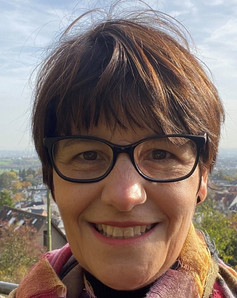
Cláudia Hilsdorf Rocha
Professor of Applied Linguistics at the University of Campinas, Brazil
Critical Digital Literacies and Language Education in Challenging Times: Voices from the Global South
In this keynote presentation, the idea of social transformation will be firstly approached from a Freirean postcolonial perspective (Freire, 1967, 1974, 2013, 2014, 2017; Kohan, 2019) in order to situate the challenges we face as (language) educators in digital times (Mills, 2016). Currently, among so many other complex and serious social problems worldwide, we are confronted with the worrying effects of neoliberal capitalism (Chun, 2017), the increasing dissemination of misinformation, the distressing rise in violence and in human rights attacks, and the alarming destruction of our natural reserves. In the face of all that, a critical and politically engaged education is urgently needed, so that an active and solidary citizenry can be nurtured. Likewise, a radically transformative (Stetsenko, 2019; Tanzi-Neto, Mazuchelli & Mota, 2021), distributed and affective agency seems to be needed to disrupt solipsism, as well as the oppressive social, cultural and linguistic inequalities that nowadays constitute our digital society. More specifically, to approach such challenges, some key principles of a critical language education in a fast-changing world will be addressed, so that a conceptual framework for the co-construction of third space literacies (Potter & McDougall, 2018), as part of an engaged and transgressive pedagogy (hooks, 2019, 2020), can be outlined. Finally, critical (Monte Mór, 2018) and creative (Connolly & Readman, 2017) media literacy will be discussed as possible (educational) tools for social transformation, from an enactive-performative point of view, as far as (language) education is concerned (Aden & Eschenauer, 2020). To illustrate the proposed discussions, a number of research projects and practices developed by Latin American scholars will be addressed, so that the voices of the Global South can emerge more evidently and add to a critical educational agenda in our challenging times.
- Aden, Joelle, & Eschenauer, Sandrine. (2020). Translanguaging: an enactive-performative approach to language education. In: Moore, Emilee; Bradley, Jessica; Simpson, James. (Eds.). Translanguaging as transformation: the collaborative construction of new linguistic realities. Bristol: Multilingual Matters. p. 102-117.
- Chun, Christian W. (2017). The discourses of capitalism: everyday economists and the production of common sense. New York: Routledge.
- Connolly, Steve & Readman, Mark. (2017). Toward «creative media literacy». In: Abreu, Belinha S. et al. (Eds.). International handbook of media literacy education. New York/London: Routledge. p. 245-259.
- Freire, Paulo. (1967). Educação como prática da liberdade. Rio de Janeiro: Paz e Terra.
- Freire, Paulo. (1974). Pedagogia do oprimido. 17 ed. Rio de Janeiro: Paz e Terra.
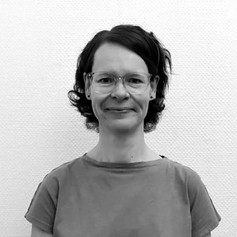
Liona Paulus
Senior lecturer in Deaf Studies and Sign Language Linguistics at the University of Cologne
Emergence of a scientific register in non-written languages: in sign languages
Natural human communication is expressed in different modalities, notably spoken language, sign language and, more recently, the tactile modality (cf. Edwards & Brentari 2019). Many spoken languages have been in existence for a long time and, owing to knowledge storage and transmission with media, they have developed into a written form. The transfer of knowledge and literature by means of fixation such as writing on stone, clay and paper has also led to the development of different text types and formatting rules (e.g. Hansen & Hessmann 2013). In the case of sign languages, which until now were ‘oral’ languages without a written tradition and were mostly found only in the private register, an analogy to written languages is developing thanks to newer technologies and digitalization. This has led to the existence and generation of different text types and literary genres (cf. Keller, Meili, Bürgin & Ni 2018, Sutton-Spence & Kaneko 2016), as well as formatting rules in many sign languages such as ASL (American Sign Language), DGS (German Sign Language) and Libras (Brazilian Sign Language), to name just a few examples. As interest in sign languages is increasing in academia, especially in linguistics, translation studies, cultural and social sciences and in some cases STEM, too, and as numerous sign language-competent individuals are now involved, a scientific register is also developing in the process (cf. Hansen 2008). In my keynote address, I will show on the basis of the aforementioned sign languages how the fixation of these languages can work and how (scientific) formatting and (academic) text types on a visual level, corresponding to written rules, look or could look.
- EDWARDS, T. & BRENTARI, D. (2019). Feeling phonology: Emergence of tactile phonological patterns in protactile communities in the United States. Presentation at the TISLR13-Conference, University of Hamburg, September 2019.
- HANSEN, M. (2008). Raum und Körpernutzung in Texte der Deutschen Gebärdensprache (DGS). Teil 1: Textkohäsion und Referenzstrukturen. Das Zeichen, No. 79, p. 274-284.
- HANSEN, M. & HESSMANN, J. (2013). Register und Textsorten in der Deutschen Gebärdensprache. Eine korpusbasierte Annäherung. Zeitschrift für angewandte Linguistik, p. 133-165.
- KELLER, J.; MEILI, A.; BÜRGIN, P. S.; NI, D. (2018). Deskriptoren zur gebärdensprachlichen Textstrukturierung im GER für Gebärdensprachen. Das Zeichen No. 109.
- SUTTON-SPENCE, R. & KANEKO, M. (2016). Introducing sign language literature: Folklore and creativity. Bloomsbury Publishing.
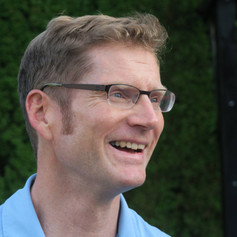
Steven L. Thorne
Professor of Second Language Acquisition at the Portland State University (USA) & at the University of Groningen, The Netherlands
Rewilding and desire lines as vectors for innovation
Language use, second-language development, and technology mediated human activity are complex processes situated in, and in some cases demonstrably interwoven with and catalyzed by, specific material and social contexts. Due to this complexity, world language (L2) education has long-attempted to simulate real-world settings in order to address the sense of artificiality this is endemic to many instructional contexts. In recent decades, there has been growing research and innovation relating to the use of digital technologies and pedagogies that interface formal L2 education with opportunities for interaction and learning that occur primarily or fully outside of classroom contexts (Reinders et al., 2022; Thorne et al., 2009, 2021), with the goal of increasing the ecological validity of both the content and interactional processes of language learning. This presentation describes a 20-year trajectory of research-informed pedagogical innovation using the metaphor of “rewilding.” Similar in some respects to other extramural and language learning beyond the classroom projects, “rewilding” language education (Thorne, Hellermann, & Jakonen, 2021) involves reverse engineering from studies of learning in the wild (Hutchins, 1995; Thorne, 2008, 2010, 2012) in order to augment and restore a diversity of real-world activities and interactional affordances into instructional curricula. The rewilding approach addresses the challenge of how to dynamically integrate formal learning settings with the vibrancy and diversity of linguistic, experiential, and situational contexts out in the world. Included are case studies of design interventions that attempt to rewild instructed language learning. These include use of mobile augmented reality, engagement with online fandom and gaming communities, and use of Large Language Model Artificial Intelligence tools. Together, these projects apply multiple approaches (i.e., sociocultural theory, usage-based linguistics, ethnomethodology, posthumanism), evince social justice commitments, and address diverse L2 learning contexts.
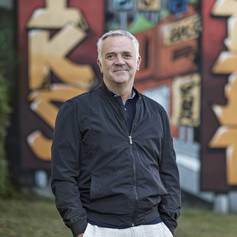
Crispin Thurlow
Professor of Language and Communication and Director of the Department of English at the University of Bern, Switzerland
The stuff of words: Language materiality and/as symbolic power
In the spirit of «rewilding» and «liberating» language, my presentation turns to language materiality as a scholarly framework for explaining how and why words matter in everyday life. The presentation will be organized around a series of empirical vignettes drawn from my own research, ranging from cookie consent notices, disability access signage, and schoolground pejoratives to business class menus and garbage bags. In connecting these banal, seemingly innocent practices, I will highlight three interrelated processes: the multimodal interplay of words and things; words functioning as material artefacts in their own right; and the way words materialize (i.e., make happen and make concrete) societal structures of inequality. As such, materiality is not simply an analytical curiosity but an explicitly political consideration; indeed, the stuff of words sits at the very heart of symbolic power.
Conference committee
- Edina Krompák (convenor)
- Dorothee Brovelli
- Silvia Frank
- Zorana Sokolovska
- Olena Marina
- Patricia Schubiger-Grenacher
Scientific Committee
- Irene Althaus, University of Teacher Education Lucerne, Switzerland
- Gustav Arnold, University of Teacher Education Lucerne, Switzerland
- Raphael Berthele, University of Fribourg, Switzerland
- Antoinette Camilleri Grima, University of Malta, Malta
- Sara Cotelli Kureth, University of Geneva, Switzerland
- Víctor Fernández-Mallat, Georgetown University, USA
- János Imre Heltai, Károli Gáspár University of the Reformed Church, Hungary
- Corey Huang Fanglei, Hongkong University, Hongkong
- Philippe Humbert, University Fribourg, Switzerland
- Teppo Jakonen, University of Turku, Finland
- Laura Loder Buechel, Zurich University of Teacher Education, Switzerland
- Giuseppe Manno, University of Applied Sciences and Arts Northwestern Switzerland
- Stephan Meyer, University of Basel, Switzerland
- Verbra Pfeiffer, University of South Africa, Pretoria
- Corinne Ramillon, Haute école pédagogique du Valais, Switzerland
- Anne Ramos, University of Fribourg, Switzerland
- Simone Ries, University of Teacher Education Lucerne, Switzerland
- Massimo Salgaro, University of Verona, Italy
- Osman Solmaz, Dicle University, Turkey
- Pia Sundqvist, University of Oslo, Norway
- Melike Ünal Gezer, TED University, Turkey
- Stefanie Wyss, University of Teacher Education Lucerne, Switzerland
Sponsors
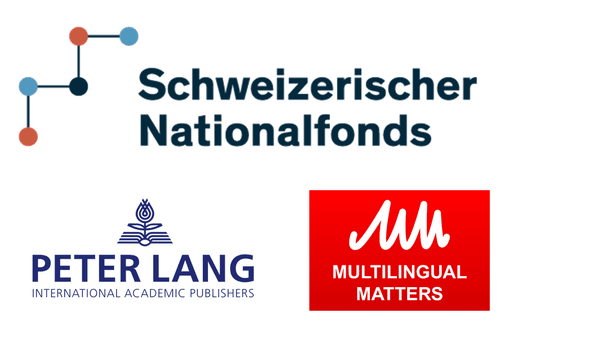
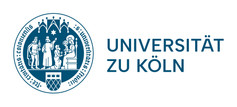
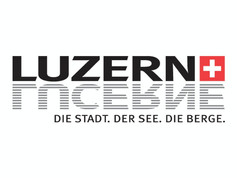
Kontakt
Prof. Dr. phil.
Frohburgstrasse 3
6002 Luzern
edina.krompak@phlu.ch
Portrait
